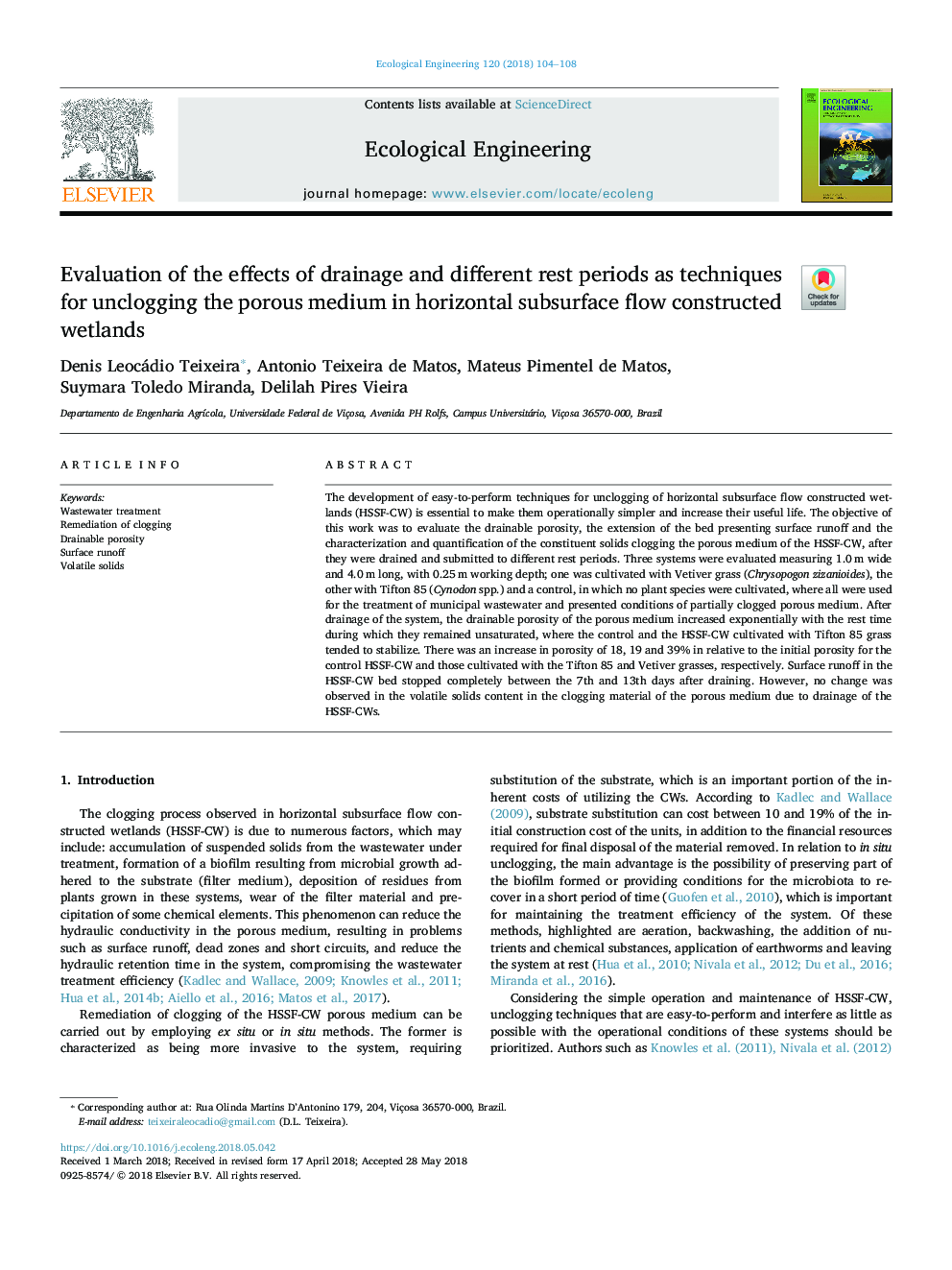| Article ID | Journal | Published Year | Pages | File Type |
|---|---|---|---|---|
| 8847765 | Ecological Engineering | 2018 | 5 Pages |
Abstract
The development of easy-to-perform techniques for unclogging of horizontal subsurface flow constructed wetlands (HSSF-CW) is essential to make them operationally simpler and increase their useful life. The objective of this work was to evaluate the drainable porosity, the extension of the bed presenting surface runoff and the characterization and quantification of the constituent solids clogging the porous medium of the HSSF-CW, after they were drained and submitted to different rest periods. Three systems were evaluated measuring 1.0â¯m wide and 4.0â¯m long, with 0.25â¯m working depth; one was cultivated with Vetiver grass (Chrysopogon zizanioides), the other with Tifton 85 (Cynodon spp.) and a control, in which no plant species were cultivated, where all were used for the treatment of municipal wastewater and presented conditions of partially clogged porous medium. After drainage of the system, the drainable porosity of the porous medium increased exponentially with the rest time during which they remained unsaturated, where the control and the HSSF-CW cultivated with Tifton 85 grass tended to stabilize. There was an increase in porosity of 18, 19 and 39% in relative to the initial porosity for the control HSSF-CW and those cultivated with the Tifton 85 and Vetiver grasses, respectively. Surface runoff in the HSSF-CW bed stopped completely between the 7th and 13th days after draining. However, no change was observed in the volatile solids content in the clogging material of the porous medium due to drainage of the HSSF-CWs.
Related Topics
Life Sciences
Agricultural and Biological Sciences
Ecology, Evolution, Behavior and Systematics
Authors
Denis Leocádio Teixeira, Antonio Teixeira de Matos, Mateus Pimentel de Matos, Suymara Toledo Miranda, Delilah Pires Vieira,
